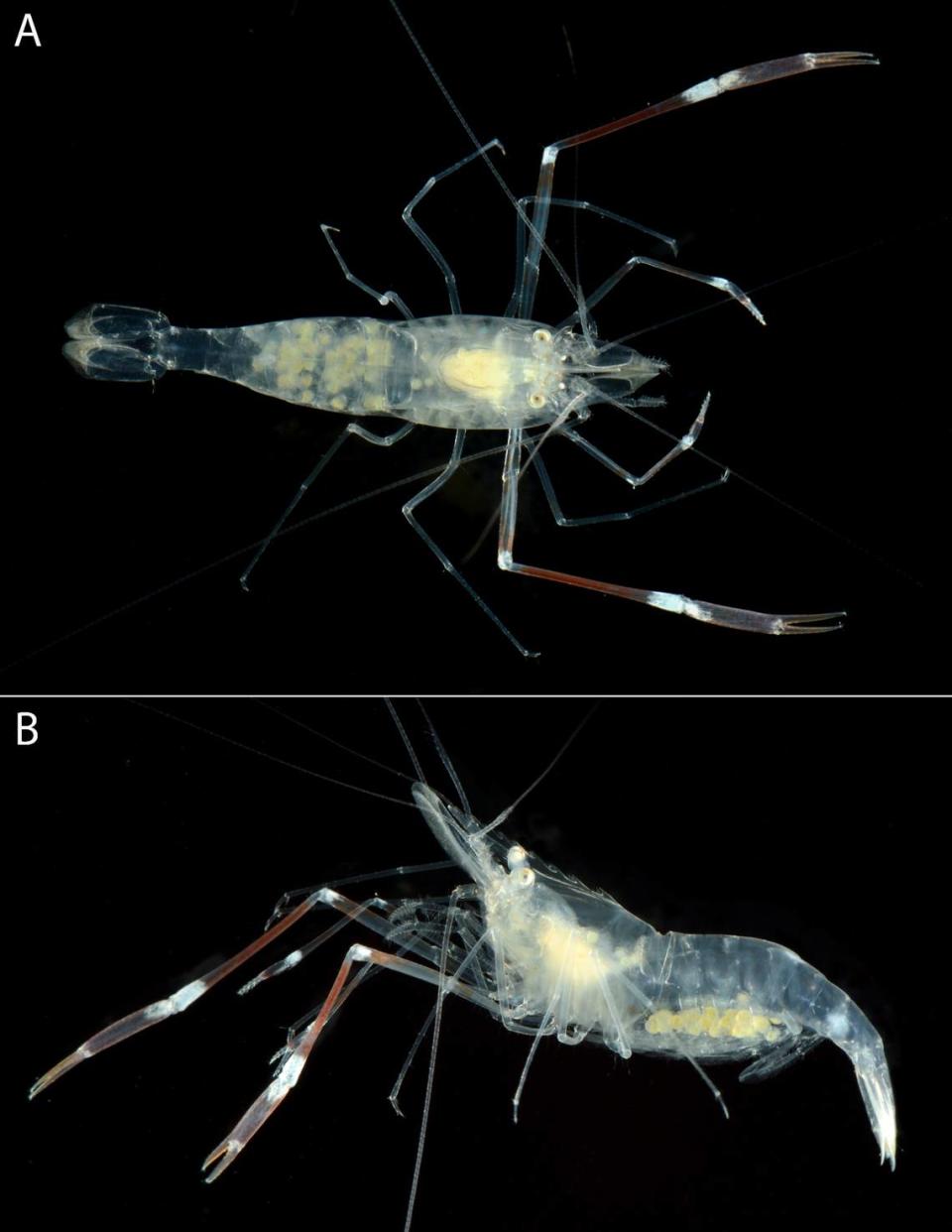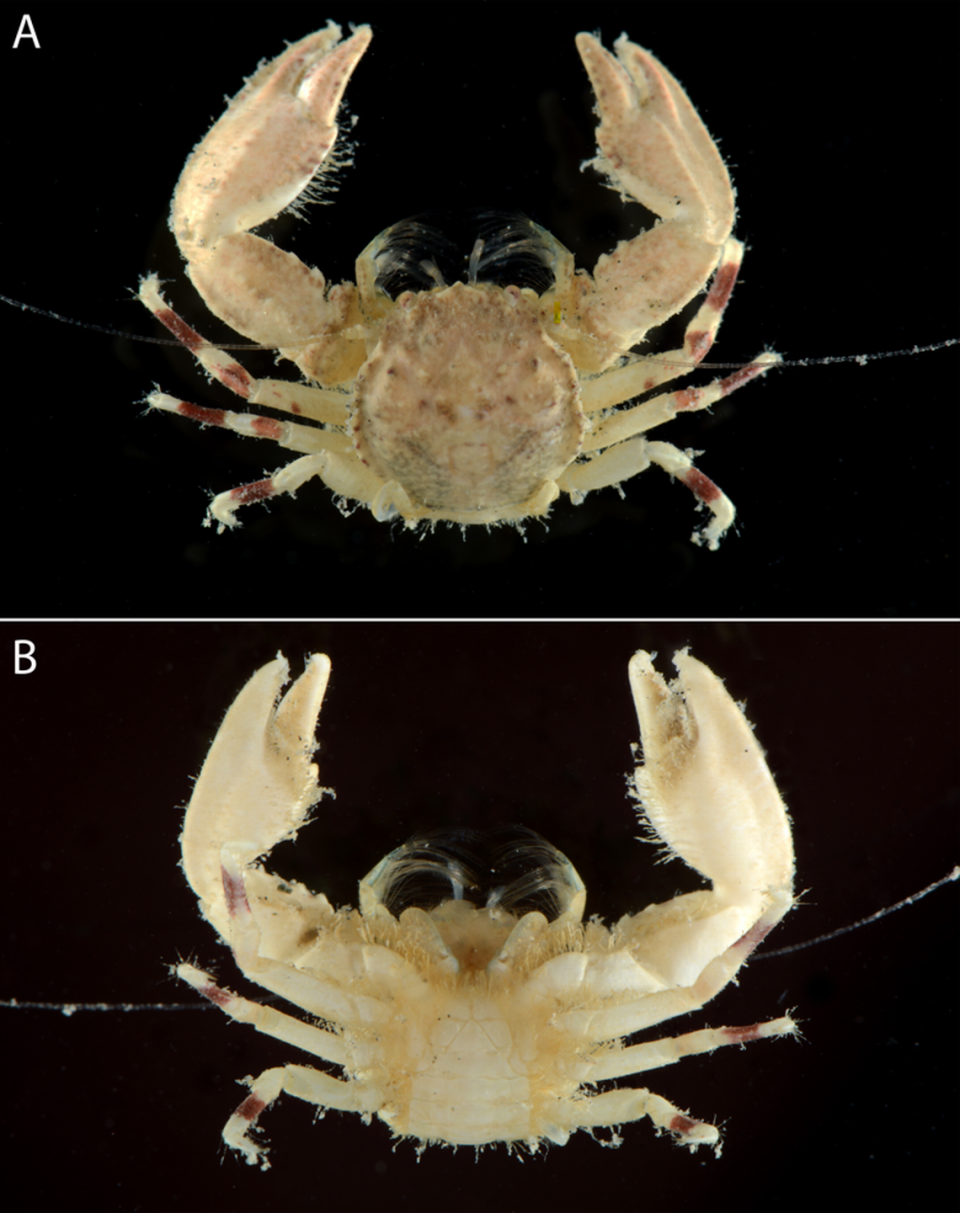See-through creature hiding ‘in plain sight’ discovered as new species in Saudi Arabia
Searching the shallow waters along the western coast of Saudi Arabia, scientists peered into several burrows. They found some “unusual” animals lurking inside — and discovered two new species.
The researchers, Arthur Anker and Francesca Benzoni, were surveying underwater burrows in the shallow, sandy flats of Thuwal, according to a study published May 4 in the journal Zootaxa.
They collected an “unusual” shrimp and several crabs “hidden in plain sight,” the study said. The animals were found living in snapping shrimp burrows. Looking closer, the researchers realized they had discovered two new species of crustaceans.
Soon after the discovery, the crab and shrimp specimens “were accidentally lost” while being transported to a holding institution, the study said. Undeterred, the researchers went back to the Thuwal sand flat and collected several more specimens.
The new species of shrimp, Palaemonella jamila, has a “translucent” coloring with a “pale yellow tinge,” researchers said. It has a few “dull reddish spots” on its body and eyestalks. Photos show the see-through creature.
The small shrimp reaches about 0.3 inches in length, the study said. Its name, jamila, means “beautiful, pretty (and) elegant” in Arabic and refers to the animal’s appearance.
The new shrimp species was distinguished from other known species by its burrow-dwelling behavior and morphological characteristics, particularly its small cornea, the study said.

The new species of porcelain crab was named Enosteoides habibi, researchers said. The word “habibi” means “dear or beloved” in Arabic. When used “between good friends,” the word means “buddy.” Researchers chose the name because the crab is “a friend of snapping shrimps, gobies and other associates of the burrow” where it was found.
Enosteoides habibi is about 0.3 inches long and wide, the study said. It has a “tan-yellow” coloring with “darker red-brown” markings. Photos show the almost fuzzy-looking animal.
The new crab species was distinguished from other known species by its limited number of teeth, spinal shape and coloring, the study said.

Researchers did not address how the new species’ DNA compared to other known species.
The new species discoveries “highlights the necessity” of further studying the “largely neglected and still undersampled shallow subtidal habitats of the Red Sea,” researchers said.
Thuwal is about 620 miles southwest of Riyadh, the capital city.
Musical call heard echoing across swamp came from newly discovered creature in China
Fisherman pulls in nets covered with ‘fairy floss’ – and discovers a new species
Rare new creature — known for its ‘cryptic’ hunting habits — discovered in rainforest

